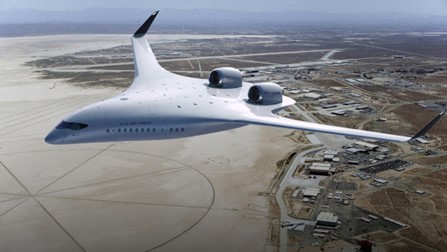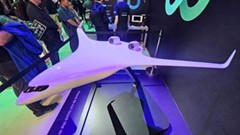Passenger plane with entirely new ‘blended wing’ shape aims to hit the skies by 2030
By Keumars Afifi-Sabet Published January 10, 2025
A new type of passenger plane will adopt a design that blends wings into the aircraft’s body, which its creators say will cut fuel consumption by 50% and reduce noise.
When you purchase through links on our site, we may earn an affiliate commission.Here’s how it works.

A novel passenger jet could take to the skies in the next five years that has a completely different shape than any currently flying.
The plane uses a “blended wing” design, which could improve fuel efficiency by 50%, JetZero and Siemens representatives said Wednesday (Jan. 8) in a press conference held at CES 2025 in Las Vegas.
The concept of blended-wing aircraft, in which the wings blend seamlessly into the body, is more than 100 years old, having been first described by Russian pilot Nicolas Woevodsky, but it is most commonly associated with military aircraft.
Passenger jets have conventionally adopted a long, tubular body with wings that do not blend into a single flat plane. This is because switching to a novel plane design has been deemed commercially risky. Blended-wing aircraft, by contrast, can reduce fuel consumption and be quieter, thanks to higher lift-to-drag ratios and better integration of the noisy propulsion systems.
A new plane based on a 100-year-old design

JetZero representatives say their blended-wing design requires a shorter and wider fuselage that is blended like the wing to provide lift, in turn reducing the surface area that is needed and creating a lighter plane with less drag. The size of the engines is also reduced, thanks to the reduced weight and drag, meaning more passengers can fit into a relatively smaller aircraft.
The new plane will be 100% compatible with sustainable aviation fuel as well as being capable of accommodating hydrogen fuel — with the long-term aim being to fly with zero emissions. It will hold 250 passengers and have a range of 5,750 miles (9,250 km).


